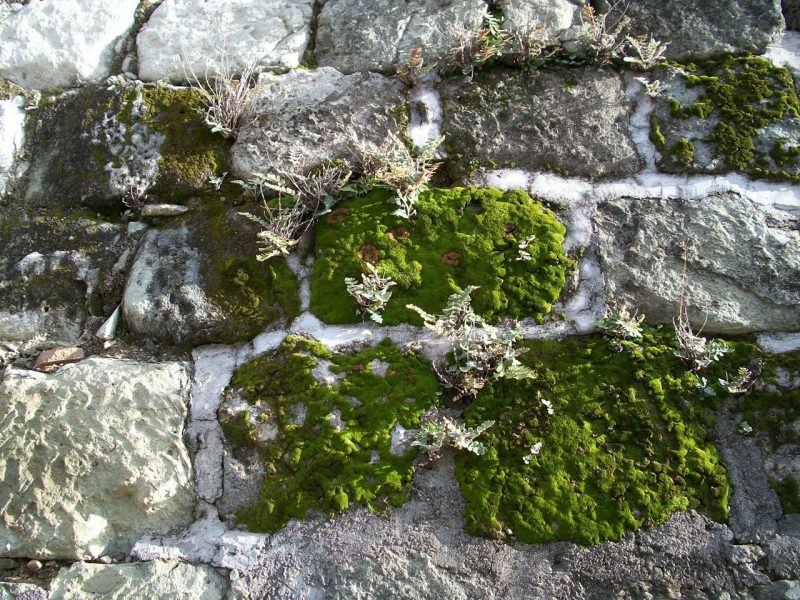There’s the issue of tending to your greens, even to little details like knowing how is a liverwort different from a moss. Needless to say, having a garden requires effort.
It’s no easy business to grow your own plants in your backyard. You’ve got to familiarize yourself with lots of plant species. With a bit of unwanted luck, some plants will create challenges for you along your gardening path.

Liverwort
Generally considered harmless, liverworts are small green plants often mistaken for mosses by most people. These leafy species have a fairly global distribution, though they abound in humid locations most of the time.
Appearance
Liverworts are often overlooked due to their very small size (2 to 20 mm wide and 4 in. long). The most familiar liverwort consists of a flat ribbon-like thallus or plant body, while there is also a kind that has flattened leaves.
Reproduction
Liverworts reproduce from spores, not seeds, which is similar to that of mosses. Also, they can do it asexually (without the need of an egg and sperm) and sexually.
For sexual reproduction, male and female liverworts develop small umbrella-shaped structures. Sperm from the male umbrella fertilizes the egg. The embryo later develops into a capsule that releases spores carried by the wind to a new location.
Symptom
When a liverwort appears on trees or shrubs, it could be a sign that the plant is getting old or sick. They thrive in moist, shady areas where there is high soil moisture, high humidity, and high nutrient levels in the soil, notably nitrogen and phosphorus.
Benefits
Collectively, bryophytes (the family liverworts are classified under) do much to reduce contamination of groundwater and prevent erosion. They could also help decrease stormwater overflow and eventually minimize air pollution.
Prevention or treatment
Liverworts take advantage of the same conditions that make plants grow. Therefore, avoid overwatering plants, space them farther apart, and increase air circulation in the environment to reduce humidity, thereby slowing liverwort growth and infestation.
Moss
On lawn walls, in road cracks, even on the roofs over our heads, there are mosses pretty much everywhere. They have extreme survival properties, and surprisingly, they have an important role to play in maintaining biodiversity.
Appearance
Mosses are small, rootless, flowerless, non-vascular plants commonly found in moist shady locations, such as woodland and forest floors. They typically grow in large clusters and create a dense layer of foliage similar to that of a carpet.
Reproduction
Mosses reproduce by spores instead of seeds. Under favorable conditions, the spore germinates and branches out to become a green thread, otherwise known as a protonema.
Symptom
A number of conditions could lead to the presence of moss. Moss tends to grow where there is damp soil due to poor drainage, acidic soil or soil with insufficient nutrients or oxygen, and excessive shade where sunlight does not reach for adequate plant growth.
Benefits
Moss has good absorption capabilities, likened to that of mulch, which can be a good way to minimize the incidence of soil erosion. Since it also has water-purifying effects and prevents water from becoming stagnant, it deters mosquito breeding.
Prevention or treatment
Try Ferrous Sulfate or Iron (II) Sulfate. It’s a water-soluble fungicide and herbicide that can change your soil’s pH levels for healthier growth and moss removal.
Why Should You Grow Your Plants in a Semi pro Greenhouse?
Greenhouses are used by many gardeners to protect their plants from temperature changes and unwanted pests and diseases. If you haven’t tried using one or you’re still on the fence, here are several reasons why you should:
A semi pro greenhouse protects your plants from pests
Aphids, caterpillars, spider mites, thrips, and other pests would love to munch on your plant’s leaves, flowers, and produce if given the chance. Keep these nasty critters away by placing your plants inside a semi pro greenhouse. You can even use screens and traps to further protect your plants.
A semi pro greenhouse allows you to grow different plants even with limited space
If you love growing crops but you don’t have space, a semi pro greenhouse is a great solution. They’re compact and affordable, perfect for gardeners or would-be gardeners with limited space. You can place semi pro greenhouses on your balconies, decks, and patio – some even fit on tabletops!
A semi pro greenhouse lets you plant any time
With a semi pro greenhouse, you don’t have to wait for planting season to grow your crops. You can use heating/cooling systems to alter the temperature inside the greenhouse based on your plants’ needs.
A semi pro greenhouse shields your plants from inclement weather
Semi pro greenhouses can effectively shield your plants from the negative effects of bad weather. Thunderstorms, heavy rain, high winds, and the excessive heat can damage even the most resilient plants. A greenhouse protects them from bad weather so your plants will grow healthy and strong.
The Bottom Line: How is a Liverwort Different from a Moss?
Being a gardener is not merely a matter of digging and planting and then calling it a day. It’s also about being able to differentiate the trivial stuff, things like how is a liverwort different from a moss – even if you don’t have a green thumb.
